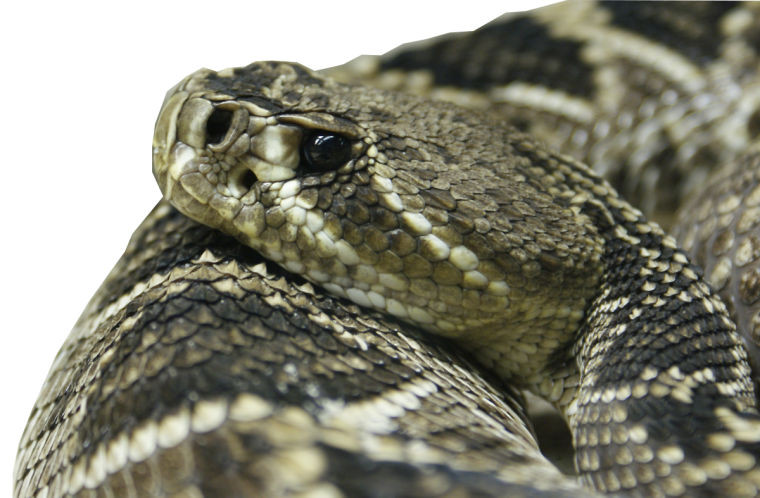Eastern diamondback rattlers on the decline
CHARLESTON - One of the more mysterious animals in the Lowcountry is really pretty shy, long-lived, a homebody. And dreaded - the Eastern diamondback rattlesnake.
But bit by bit, researchers are learning how people can live with the 6-foot-long venomous viper that makes their skin crawl, the snake that for generations they have stomped, chopped, shot and even dynamited when it crossed paths with them.
U.S. Forest Service biologists recently found diamondbacks in Francis Marion National Forest north of Charleston. They plan to attach transmitters, to learn what habitats the snakes are using and how they move and disperse.
The snake is getting the close look because it's being considered as a federal threatened species. But the study joins a radio-tagging of 10 diamondbacks a few years back in the ACE Basin south of Charleston, as well as an ongoing 19-year study by South Carolina Department of Natural Resources herpetologists at the Webb Wildlife Center along the Savannah River. All three studies are aimed at figuring out how to get along with the reptile.
Why in the world learn to live with a venomous animal that kills nearly half the people who are severely bitten?
Diamondbacks are in decline, and they are an alpha predator, a "flagship" species of the longleaf savannah. The savannah is healthy so long as they are around. And the longleaf habitat may be the most important Southeastern coastal forest habitat. It fosters 300 varieties of native plants, myriad birds including the wild turkey, 170 species of reptiles or amphibians and 36 mammals. With timbering and development, the longleaf's once vast spread across the coastal Southeast has shrunk to a tiny fraction of that acreage. Arborists are now in a multi-state effort to restore the longleaf.
"You take out one species from that ecosystem and you can alter the entire ecosystem," said Mark Danaher, forest service wildlife biologist who is part of the team conducting the Francis Marion snake study.
"Diamondbacks are providing a lot of control over rodents, species that we could be overrun with, and they're doing it for free," said Will Dillman, South Carolina Department of Natural Resources herpetologist.
So, how do you live with an animal as thick around as a muscled arm, that strikes twice as quickly as a major league fastball?
"Living with venomous snakes is really no different than living with wasps, hornets or yellow jackets," Danaher likes to tell people. "If you encounter a large hornet nest in the woods, do you disturb it?"
And you're not nearly as likely to disturb a diamondback. Like most snakes, it is reclusive, relatively docile and has learned to shun large hoofed animals that step around it.
The snake does have a reputation for ferocity - the classic "it came out of nowhere" rattler with a lightning-like strike. That's because its marking are such good camouflage that if you look away for a moment, the snake can't immediately be picked out again when you look back. People step or sit on them unaware, or put a hand down by them.
The diamondback is a species of concern in South Carolina, disappearing as people move in. There aren't a lot of them left. In the Francis Marion, biologists searched two years before finding a snake and so far have found only four.
"It's very, very much a habitat specialist" in a declining habitat, Dillman said. "The fact that we still have diamondbacks continuing to persist in some of these areas, I think, is a pretty neat thing."
At the Webb Center, studies have shown snakes have a high fidelity to their home turf and are unexpectedly long-lived, surviving 20 years or more.
In the ACE Basin, the study showed that males will roam as much as a mile or more to mate but return to their sites the next night. The researchers attempted to relocate the rattlers, to see if they could be moved from encroached habitats. Researchers found that the moved snakes covered a lot of ground to find a habitat similar to the one they left, but then settled.
Today the snake is still threatened by "overharvest," or outright slaughter, as well as over-collection - for skin and exotic pets. And yet today, venomous snakes are proving more valuable than ever, as medicines are developed from the venom, Danaher said. "In the future, areas like the Francis Marion are going to be the last strongholds for species like that."
More Articles to Read

